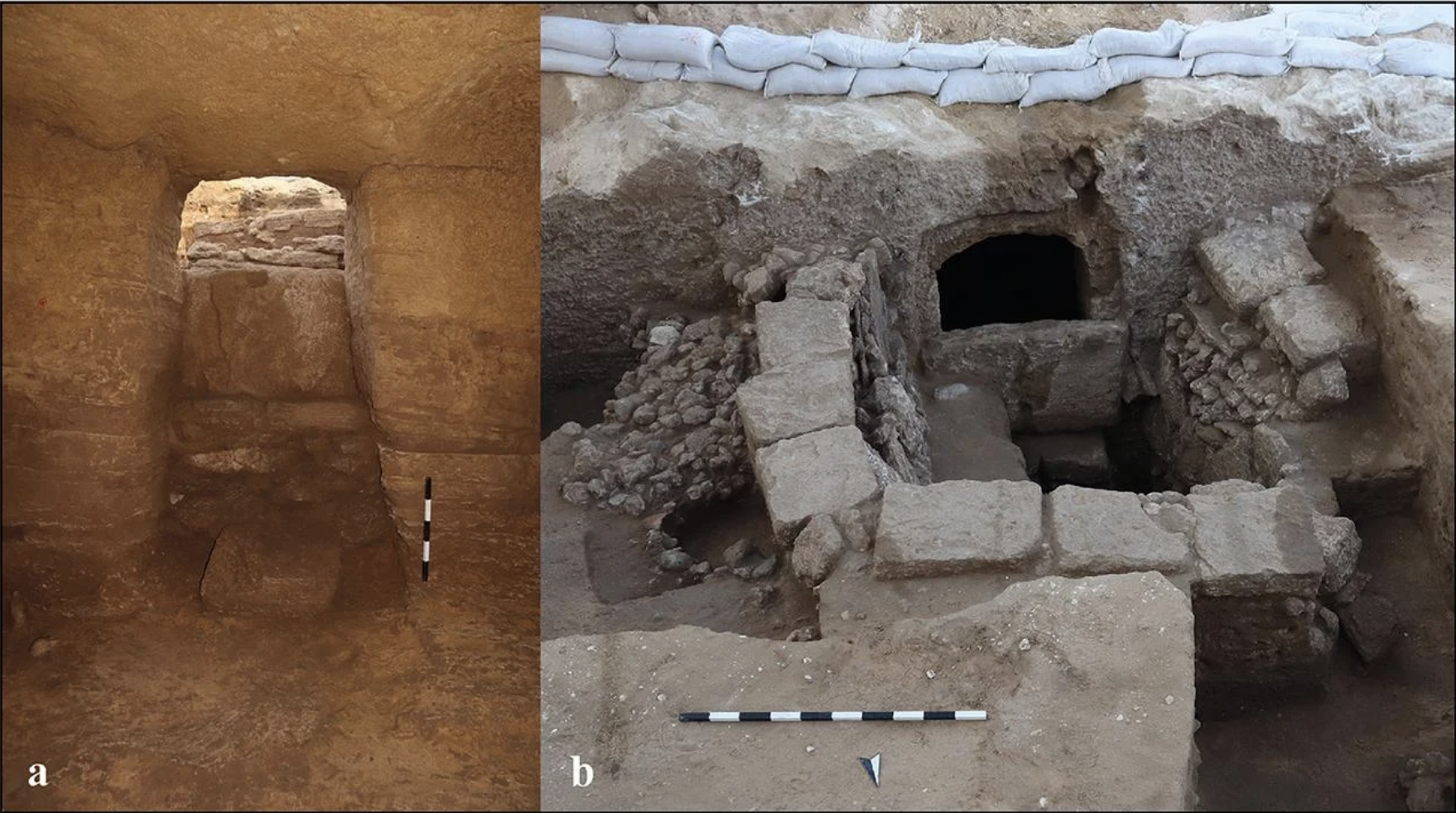Bronze Age Burial Complex Unearthed at Ancient Canaanite Port Reveals Ties to Egypt!
Archaeologists have made an extraordinary discovery on Israel’s Mediterranean coast: a remarkably well-preserved Late Bronze Age burial complex dating back around 3,300 years. Found near the ancient port of Yavneh-Yam (modern Palmachim Beach National Park), the site offers rare insight into Canaanite burial customs and their close links with Egypt during the Amarna period.
The find, recently published in the journal Antiquity, came to light quite by accident when construction work broke through the ceiling of a large rock-cut tomb. What emerged was a monumental chamber that had lain undisturbed for millennia, revealing a glimpse into the lives and deaths of an elite community connected to Egypt’s imperial networks.
The tomb overlooks one of the most sheltered natural anchorages on the southern Levantine coast, long identified with the Egyptian port of Muḫḫazu, mentioned in 14th-century BCE texts such as the Amarna Letters. While earlier digs at Yavneh-Yam had uncovered only modest remains from the Late Bronze Age, this discovery transforms our understanding of the settlement. It paints a vivid picture of a thriving, powerful coastal polity engaged in far-reaching maritime trade.
Carved directly into the coastal sandstone, the burial chamber measures roughly 6.5 metres across, supported by a central pillar. Its precise symmetry, arched doorway, and finely cut façade all point to significant planning, craftsmanship, and resources, clear hallmarks of elite status.
Archaeologists found the remains of at least ten individuals (men, women, and children) laid to rest along the walls. Surrounding them were more than 140 complete ceramic vessels, remarkably intact after thousands of years. Among these were imported luxury goods, including a gold earring, an Egyptian-style Bes vessel, and a scarab bearing the cartouche of Pharaoh Thutmose III.
The pottery collection tells a fascinating story of international trade. Alongside locally made wares were Cypriot Base Ring jugs, White Slip bowls, and Late Helladic cups from the Aegean. Together, these objects reveal Yavneh-Yam’s role in the vibrant maritime networks linking Canaan, Cyprus, and the wider eastern Mediterranean during the 14th and 13th centuries BCE.
Chemical analyses of residue inside some containers identified traces of fish, goat and sheep meat, and plant materials, evidence of food offerings and ritual feasting associated with funerary rites.
Outside the chamber, an open courtyard contained ash layers, animal bones, cooking pots, and a stone-lined pit, all signs of ceremonial banquets held in honour of the deceased. Fragments of terracotta figurines add to the picture of ritual activity. Well-documented examples of such Bronze Age mortuary feasts are exceptionally rare, making this discovery a valuable window into Canaanite social and religious life under Egyptian influence.
Sadly, the tomb was partially looted soon after its accidental exposure in 2022. However, archaeologists managed to capture a full 3D photogrammetric model before major damage occurred, preserving crucial information about the original layout and contents. The chamber, recorded in near-pristine condition, stands as the first intact monumental rock-cut tomb from Late Bronze Age Canaan to be properly documented since the 1960s.
Experts believe the Yavneh-Yam burial cave demonstrates not only the technical skill of local Canaanite builders but also the deep integration of local elites into the Egyptian imperial system. Constructing such an elaborate tomb would have required immense labour and resources, suggesting that those buried within held high status, likely linked to the administration of the Egyptian-controlled port of Muḫḫazu.
Ongoing research on the human remains, animal bones, plant residues, and imported goods aims to shed more light on the diet, trade connections, and identities of these long-forgotten individuals.


